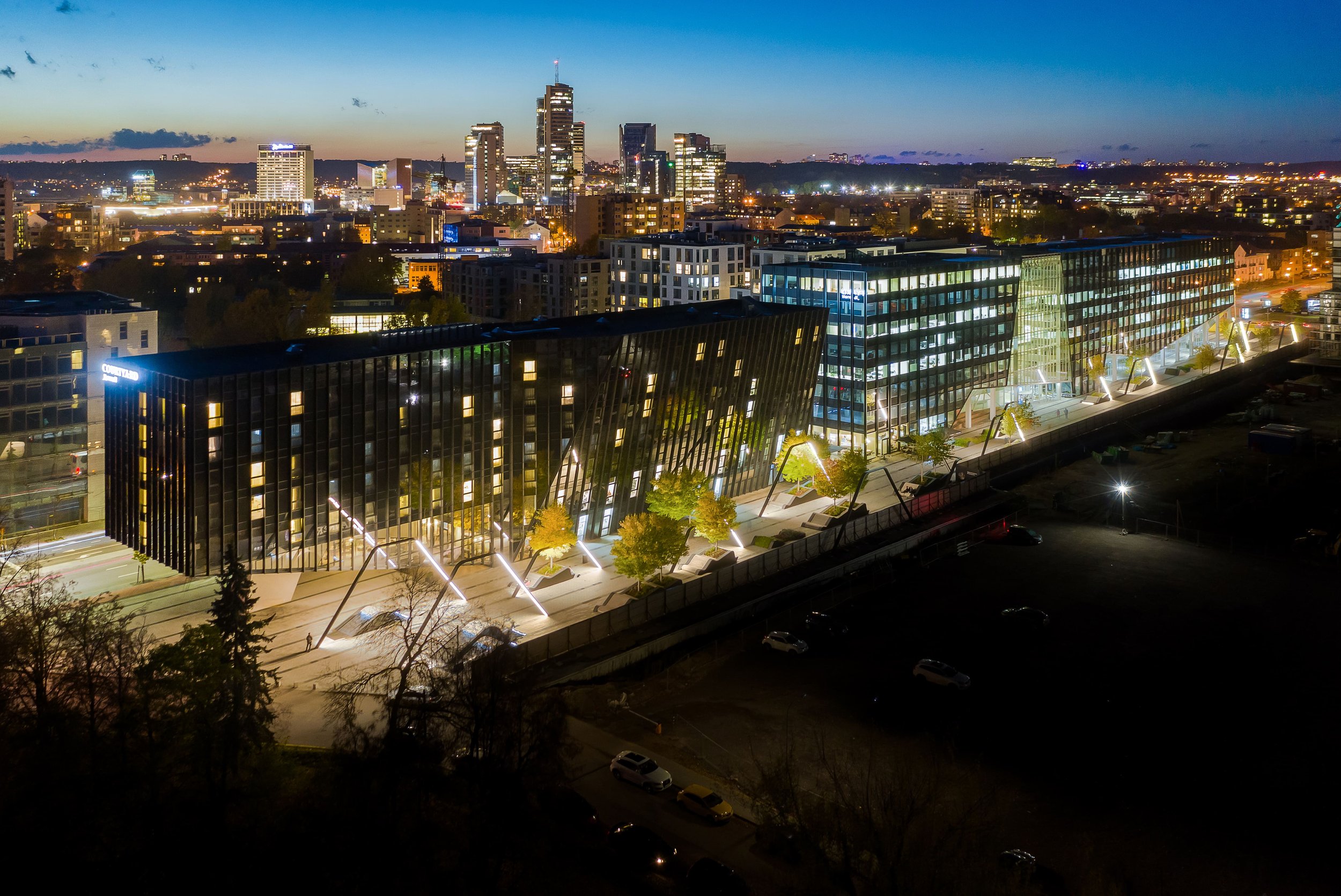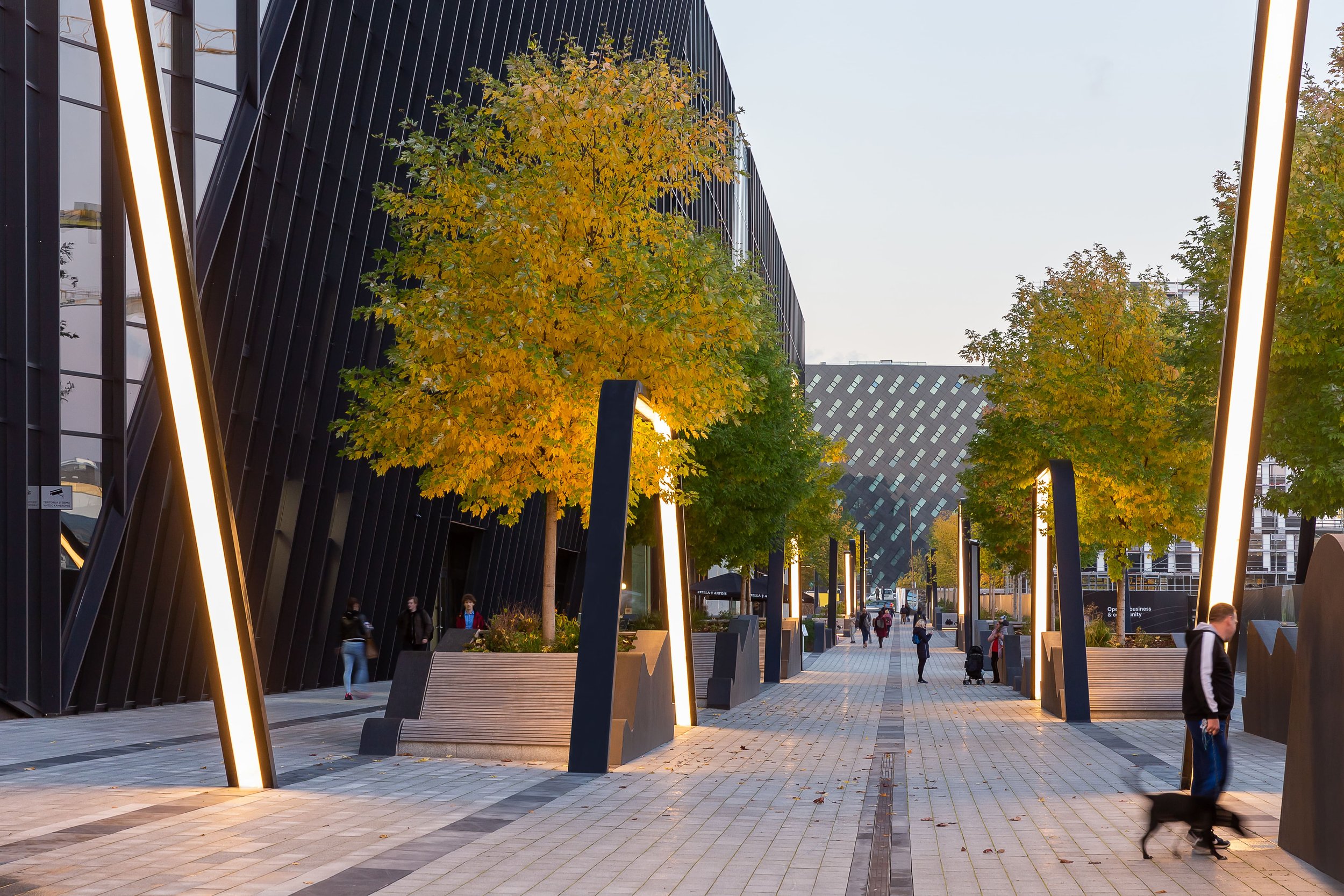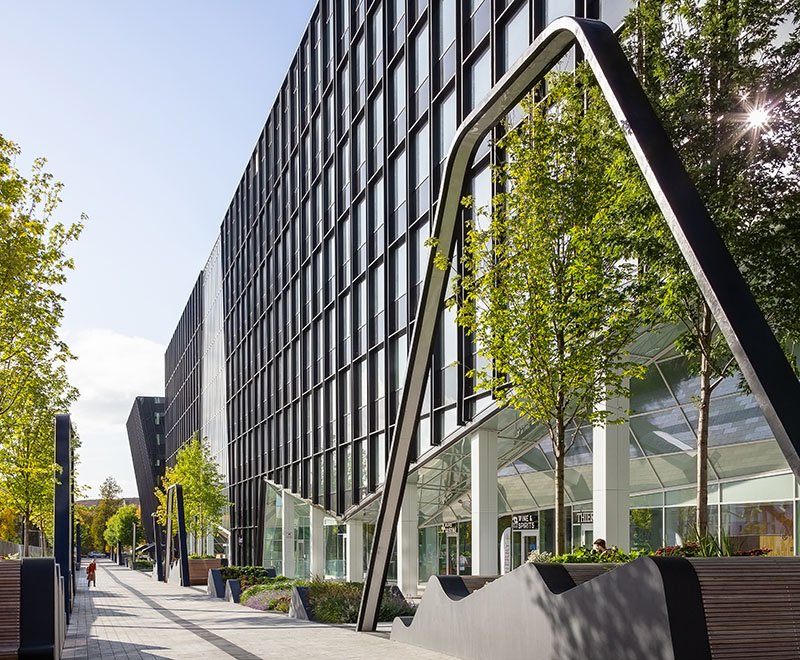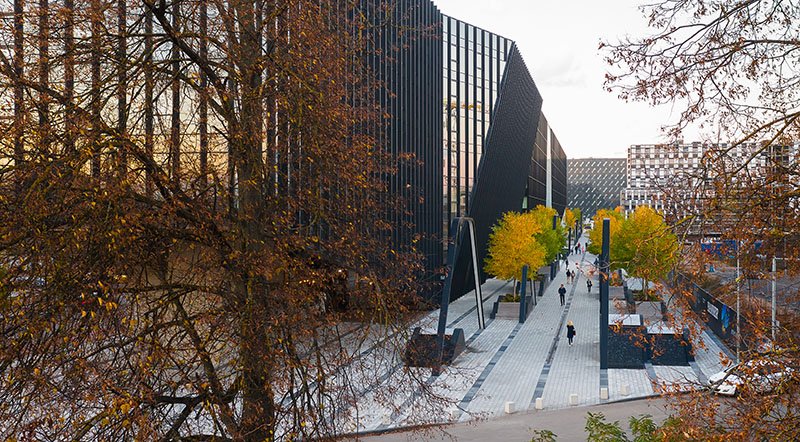Vilnius Plaza
Location Vilnius, Lithuania | Client UAB Hanner | Photographer Norbert Tukaj | Size 1 hectare | Status Completed 2018 | Photographer Norbert Tukaj | Tags Parks and Civic Spaces, Public Realm and Infrastructure
In 2018, MSP won first prize in the competition to design a new plaza in central Vilnius. We were then commissioned to build the project - one of the first contemporary landscapes in Lithuania's historic capital.
We seized the competition as an extraordinary opportunity to re-energize the promenade and plaza, combining contemporary programming and design with sustainability and urbanism strategies. The new plaza creates a cultural destination connecting Vilnius Cathedral to the south with the residential Šnipiškės neighborhood to the north..
During the Soviet era, the site was home to the City’s main football stadium; it then became unused and derelict. The redevelopment of the area created a mixed-use development. To the north, there are multiple pedestrian routes into the Šnipiškės neighborhood. To the south, the site abuts the plaza in front of Vilnius Cathedral, beyond which Rinktines Gatve and Seimynisklu Gatve lead to the Nerris River waterfront. There are attractive views across the river to one of Vilnius’ main historical attractions, the Gediminas Castle Tower on its green hill.
Our site analysis showed a north-south axis: historical, traditional, demographic and cultural influences progressed from the Old City to the south through to the more developed residential areas to the north. The physical topography changes between the Castle mound across the river to the south to the level northern zone.
Our design narrative of a 'surging landscape' celebrates these topographic progressions through the landscape, and re-energises the promenade.
We used large angular bars as lighting and landscape features, which give the site its identity. Planters provide the depth of soil needed for the trees (the plaza is above an underground parking lot) and also provide seating. These elements break up the large promenade, making it more human in scale, for a relaxing walk through, or somewhere to stop to sit in the sun and chat to friends. Rain gardens mitigate storm water runoff in the winter and the trees offer shade in the sunny months as well as filtering the wind on blustery days.
What was once a derelict football stadium is now a valued cultural destination.
During the past 50 years, the city has been transformed. Vilnius is now at the forefront of progressive thinking about shaping cities for the new urban age. This new era is characterized by global trends including deep concern about climate change and declining natural resources, along with the need for a sense of community and belonging, as well as a connection to nature.
©Norbert Tukaj






